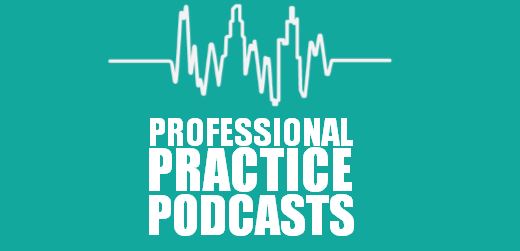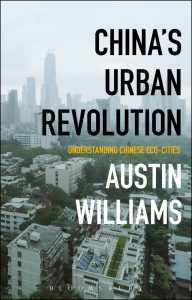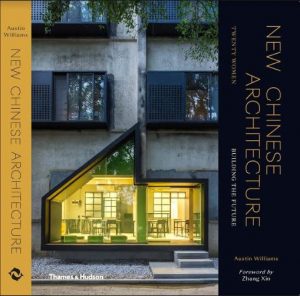The Academics of the Madhouse
Austin Williams | 31 March 2005
Revised criteria for university research funding are causing much protest. But is the solution being argued for any better? The ‘strictly private and confidential’ memo sent to Daily Telegraph staff in February outlined five criteria on which their performance and hence their status in the compulsory redundancy hierarchy would be judged. The five categories were: 1. Approach to work (their commitment and enthusiasm); 2. Knowledge and Skill (specifically an ‘ability to use technology’); 3. Flexibility; 4. Team work, and lastly; 5. Quality of work. This bureaucratic approach to the business of a newspaper – emphasised by a commitment to remove mostly news journalists – implies that some employees could score highly by simply turning up on time, using a computer and being popular. Whether they are any good at their job is of secondary importance under such a managerial approach.
This vignette serves only to illustrate the madness of management by formula and by assessment target. However, this is exactly the same type of madness that goes on, uncommented, in university education every day of the week.
It was the closing down of Chemistry courses in Exeter University, the University of Kent, King’s College London and Queen Mary, University of London that concentrated the minds. Then Newcastle dropped Physics. But it was the high profile threat of closure to Cambridge that focussed attention on architecture schools. Under the 2001 RAE, Cambridge had been demoted from a 5* to a 4 with a consequent loss of £350,000 of Higher Education Funding Council for England (Hefce) grant funding. After a campaign, the course was reprieved. But Peter Carolin’s campaigning article (AJ 18.11.2004) cited everything from the course’s diversity, its flexibility, the humanitarianism of its alumni and its student magazine as reasones to keep it open, Everything, that is, except its academic excellence. Have we really lost sight of what an education means?
Cite lines
Set up in the 1980s, the Research Assessment Exercise (RAE), was intended to bring some scientific rigour to the business of keeping track of which universities were doing well and which needed improvement. It was premised on the Thatcherite desire to quantify the results of governmental investment in education: after all, what does it mean to be a ‘good’ school? Basically, the government wanted to know what they were getting for their money, but this monetarism represented a cultural shift in the way that education was seen. The principle in education for education’s sake (which had seldom been overtly defended in the past) was rejected, and auditable ‘benefits’ became the guage. In the intervening years, there has been an incremental increase in the reliance on targets and tangible ‘results’; such that the belief in education as a social good has been translated into a discussion about education being an investment in marketable commodities.
Coincidentally, in the same period, there has been a demand for improved ‘teaching standards’ and ‘increased access’ to be seen as the best assessment tool. This anti-elitist side of the debate, unfortunately portrays university education – an inherently elitist structure – as no more than a teaching academy: an extension of schooling. Universities, however, were never about ‘teaching’ per se, but were an introduction to an academic environment.
So teaching or research, practical or academic, this artificial separation is exacerbating the problem and forcing universities to play to their strengths. While the Russell Group of research-centred universities have forged an alliance to maintain RAE standards, other schools receive funding in other ways: from meeting social inclusion targets or student numbers.
For Russell Group universities like Cambridge, departments are now judged by the amount of research that they carry out – in peer review journals – and, to a certain extent, on how much that research is conveyed in media outlets. In this way, the allocation of shares in the government’s £8billion research budget over the next six years is quantified on the basis of an appraisal of each university department’s reputation and ‘strength’ of its research.
Currently, universities are positioning themselves in relation to the forthcoming 2008 REA review. This has given rise to the welter of courses slashed and staff rationalisations. Most recently, lecturers at Brunel University threatened to cut 60 members of staff who were not considered to be ‘research active’. Some courses play both sides of the debate. For instance, a new research project funded by The Bartlett School of Architecture and the RIBA will investigate admissions to architecture degree courses and compliance with ‘widening participation.’
Never mind the quality
But frequently, the research is not worthy of the name. All too often, research proposals are devised to fulfil the need to write a paper, as opposed to the principled need to interrogate a meaningful question. On every level, this rush to meet assessment criteria is demeaning the educative process. Former chief executive of the Further Education Funding Council, David Melville has bemoaned that ‘there has also been severe dent in the esteem in which research at this level is held.’ Until research ceases to be a means to an end, esteem is the least of its worries. The REA criteria of assessing the best quality research, tends to relate to the quality of the research process – or the productivity – rather than being an examination into ‘research of quality’.
The simple demand that assessors examine the amount of published work means that frequently there is little discernment. So-called accredited journals are springing up everywhere to satisfy the clamour for peer review and dissemination. Authors quote their own work to get brownie points for citations. And referencing other academics’ work has become a back-scratching parody – academically meaningless and open to corruption. And all for the sake of ‘leveraging funds and enhancing impacts.
Now, the new 2008 RAE criteria announces its reliance on ‘quality profiles.’ This is a further shift in the way that funding will be decided in three years time. As the 2001 RAE criteria were met by more than half of all universities, the government is now seeking a new basis for assessment. Rather than give more money to more attaining schools, the levels of funding mean that school funding has to be ‘selective.’ The new criteria includes an increased emphasis on applied research and for research in ‘new disciplines and infields crossing traditional discipline boundaries.’
A lot of research could simply be seen cynically as a mechanism for more funding – having to play by the government rules and in some way to subvert them. But by playing the system rather than challenging it, a credible defence of academic standards is put off for another day.
Bricks and mortarboards
Speaking of demeaned standards, the CABE document ‘The Real Budget for Research’ (referred to in the preceding article by Gordon Murray) advocates more research to clarify the terms of the research. It says that the definition of ‘Built Environment’ is too narrowly focussed on products, processes, materials and objects, at the expense of ‘soft’ research agendas about the social implications and the ‘cultural contexts’ of the built environment. It concludes by saying that built environment research ‘needs to be seen in a wider context … and via the research agendas of funders, shift the emphasis accordingly.’ Thus we see the logical consequence of the separation of chasing funding, with academic aspirations being distorted to meet external needs.
So a series of case just published by Sir Douglas Hague, former government economic adviser aims to give academic innovators an insight into how to turn their ideas into effective spin-off businesses. On the other hand, Cambridge’s architecture department was saved, based on a ‘new academic strategy’, placing more of the department’s focus on ‘sustainable’ design as a bit of populist and hopefully profitable, strategy. This is not to cast aspersions on individual course strategies, but simply to generalize a visible trend.
A regular cri-de-coeur of those opposed to RAE criteria is the crass assertion that lecturers should get back to ‘teaching,’ which, as we have seen, is not what lecturing – and the idea of ‘the academy’ – is necessarily about. Unfortunately, the response of many architecture schools will exacerbate the problem. Suggesting that research is harder to quantify in a design-led subject such as architecture, has given rise, in some instances, for demands that ‘practice’ be redefined as ‘research.’ But schoolboy semantics will achieve nothing.
Gordon Murray, writing to ARQ a few years ago called for ‘universities to teach architecture and for the Profession to train architects.’ But if we want to defend architectural education as opposed to the architectural profession, this apparently craft-centred demand misses the point and will encourage more academically weak, and architecturally prejudiced practitioners to play at lecturing.
Actually, the separation of ‘research’ and ‘teaching’ is false, and blurring the definition of what research is will not help. A university education arises out of inspirational teaching by knowledgeable academics – people who know their subject. That includes the teaching of design as well as of technology. So while university departments reappraise their teaching/research priorities, maybe the answer to the dilemma lies in university education being allowed to be an organic and non-fetishised – almost unconscious – resolution between the two.






